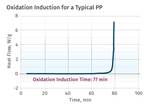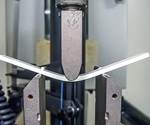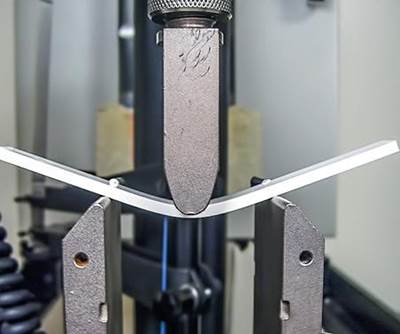A Processor’s Most Important Job, Part 10: Fiber-Length Retention
Glass and carbon fibers are often used to increase material strength and modulus. To maintain these properties, the aspect ratio of these fibers must be maintained.
This is part ten of an eleven-part series focused on the most important job of a processor. To read the rest of this series, click these links:
part one, part two, part three, part four, part five, part six, part seven, part eight, part nine, part eleven.
In previous articles in this series, we have reviewed three aspects of material composition that the processor has a role in preserving or optimizing: molecular weight, crystal structure (if it is expected), and molded-in stress. The fourth aspect of processing that is designed to ensure good retention of mechanical properties is fiber-length retention. Glass and carbon fibers are incorporated into many polymers to increase the strength and modulus of the base material. Other benefits of this modification are an improved level of creep resistance and fatigue resistance.
The reinforcing capability of fibers is related in large part to a property known as the aspect ratio, which is essentially the ratio of the fiber length to the fiber diameter. While the critical aspect ratio is dependent upon a number of factors, it is known that with increasing aspect ratio, properties such as strength and modulus improve. This is the rationale for the development of long-fiber compounds, where the initial length of the fibers is 11-12 mm instead of the 1-2-mm lengths typical of short fibers.
While these may be the fiber lengths incorporated into the compound when it is pelletized and packaged, the final properties of the molded parts produced from the material depend upon the length of the fibers in those parts. Melt processing that employs a screw will generate a significant amount of mechanical work and this has the potential to break the glass fibers. This is why long-glass materials are not compounded using extrusion. Instead, the fibers are pulled through a bath of molten resin and then cut to the desired length. But the process conditions that these raw materials experience during molding will have a significant influence on the length of the fibers in the final product. And this is true for both short- and long-glass fiber compounds.
Results of the Ash Tests
Mechanical work involves shear stress that is generated by the flow of the material during the mold-filling process and by the plasticating of the material during screw rotation. These are necessary aspects of the process, but when it comes to fiber-reinforced materials the process conditions associated with these factors must be selected with an awareness of how they affect fiber length. The accompanying photos show the result of ash tests performed on two parts molded in glass-fiber reinforced nylon. Parts from one lot were reportedly stronger and stiffer than those from the second lot, and the natural conclusion was that the two lots had been made from materials with different levels of reinforcement. However, the ash tests showed that the glass-fiber content had not changed between the two lots of parts. But the ash test did reveal an important difference that accounted for the reported variation in performance.
In the crucible on the left are an as-received part and the resulting residue from the ash test for the good lot. The crucible on the right contains the analogous parts and residue from the defective lot. Note that the ash from the good part still has a shape that is close to that of the molded part, while the ash from the bad part is a pile of disconnected fibers. The reason for the difference in appearance is the fiber length in the two parts. Longer fibers stay more entangled and will maintain the overall envelope that defines the part shape; shorter fibers will not.
Fiber-length retention actually starts with mold-design considerations. Flow paths that are too restrictive produce higher shear rates and shear stresses. This is true for the entire melt-delivery system and extends to the cavity itself. Material composition also needs to be considered, specifically any colorant being added to the material. Titanium dioxide, the most common pigment used to produce white and other light colors, is very abrasive and can promote a much greater level of fiber attrition. But in this case, the mold had not changed between the two production runs and no color was being added to the raw material. (The slight yellow color of the good part arose from a somewhat longer time in the dryer). This points to the process.
What Decreases Fiber Length?
The biggest culprit in decreasing fiber length is the conditions associated with screw rotation; a combination of revolutions per minute, recovery time and backpressure. Some backpressure is needed to provide a stable volume of material in front of the screw at the start of injection. But if it is excessive it will increase the mechanical work on the material to a point where it does more harm than good. In addition, running too low a temperature in the rear zone of the screw will create additional mechanical work that will cause more fiber breakage and also cause the screw and barrel to wear much faster. I once saw a processor who was running a 65-percent-filled PPS go through three screws in two months because they insisted on running the rear zone at a temperature lower than the melting point of the polymer.
Worn screws and barrels also cause excessive fiber breakage. And if the screw employs a mixing element that is of the high-intensity variety, this will also ensure a high degree of fiber-length reduction. Vented barrels are an example of this, but mixing elements that produce high levels of shear to achieve a homogeneous melt will also negatively impact the integrity of fiber-reinforced materials.
Finally, if regrind is being used, the fibers in the reground material are shorter than those in the virgin material, even if the process conditions are optimal. The amount of regrind should be carefully controlled to keep the properties from progressively declining as the material is continually recycled. The higher the regrind percentage, the more second-, third- and fourth-generation reclaim becomes part of the molded article. I once visited a processor who was producing parts in a 30-percent glass-fiber reinforced PBT polyester that were consistently brittle. We discovered that 85 percent of the shot was in the runner, and the runner was being reground and put immediately back into the drying hopper. With very little virgin material being added to the mix, it was not long before at least half the material in the hopper was at least fourth-generation regrind and the glass fibers were little more than powder.
One last example is worth including. There is an increase in the need for polymers that can shield electromagnetic and radio-frequency interference (EMI/RFI). This is achieved by using conductive fillers, and among the choices are long fibers of stainless steel. Levels of this fiber as low as 6-10 percent can produce the desired results. But effective shielding relies on an overlapping network of fibers through the wall of the molded part. This, in turn, is ensured by keeping the fibers long. It has been shown that excessive length reduction of the stainless-steel fibers degrades the shielding properties.
So far in this series, we have reviewed four aspects of material composition that the processor has a role in preserving or optimizing: molecular weight, crystal structure (if it is expected), molded-in stress, and fiber length in those materials where fibers are used. We have one more to review, the additive package. We will address this topic in our next column.
About the Author
Michael Sepe
Michael Sepe is an independent, global materials and processing consultant whose company, Michael P. Sepe LLC, is based in Sedona, Arizona. He has more than 40 years of experience in the plastics industry and assists clients with material selection, designing for manufacturability, process optimization, troubleshooting and failure analysis. Contact: 928-203-0408 • mike@thematerialanalyst.com.
Related Content
Prices for All Volume Resins Head Down at End of 2023
Flat-to-downward trajectory for at least this month.
Read MorePrices Up for All Volume Resins
First quarter was ending up with upward pricing, primarily due to higher feedstock costs and not supply/demand fundamentals.
Read MorePrices of All Five Commodity Plastics On the Way Up
Despite earlier anticipated rollover in prices for most of the volume commodity resins, prices were generally on the way up for all going into the third month of first quarter.
Read MoreThe Effects of Stress on Polymers
Previously we have discussed the effects of temperature and time on the long-term behavior of polymers. Now let's take a look at stress.
Read MoreRead Next
Part 11: A Processor's Most Important Job
It’s the processors job to ensure molded parts contain enough stabilizer to perform to the expectations of the end use.
Read MoreA Processor's Most Important Job, Part 9: Avoid Molded-In Stress
How to establish molding conditions that minimize internal stress in a part.
Read MorePeople 4.0 – How to Get Buy-In from Your Staff for Industry 4.0 Systems
Implementing a production monitoring system as the foundation of a ‘smart factory’ is about integrating people with new technology as much as it is about integrating machines and computers. Here are tips from a company that has gone through the process.
Read More
.jpg;width=70;height=70;mode=crop)





















